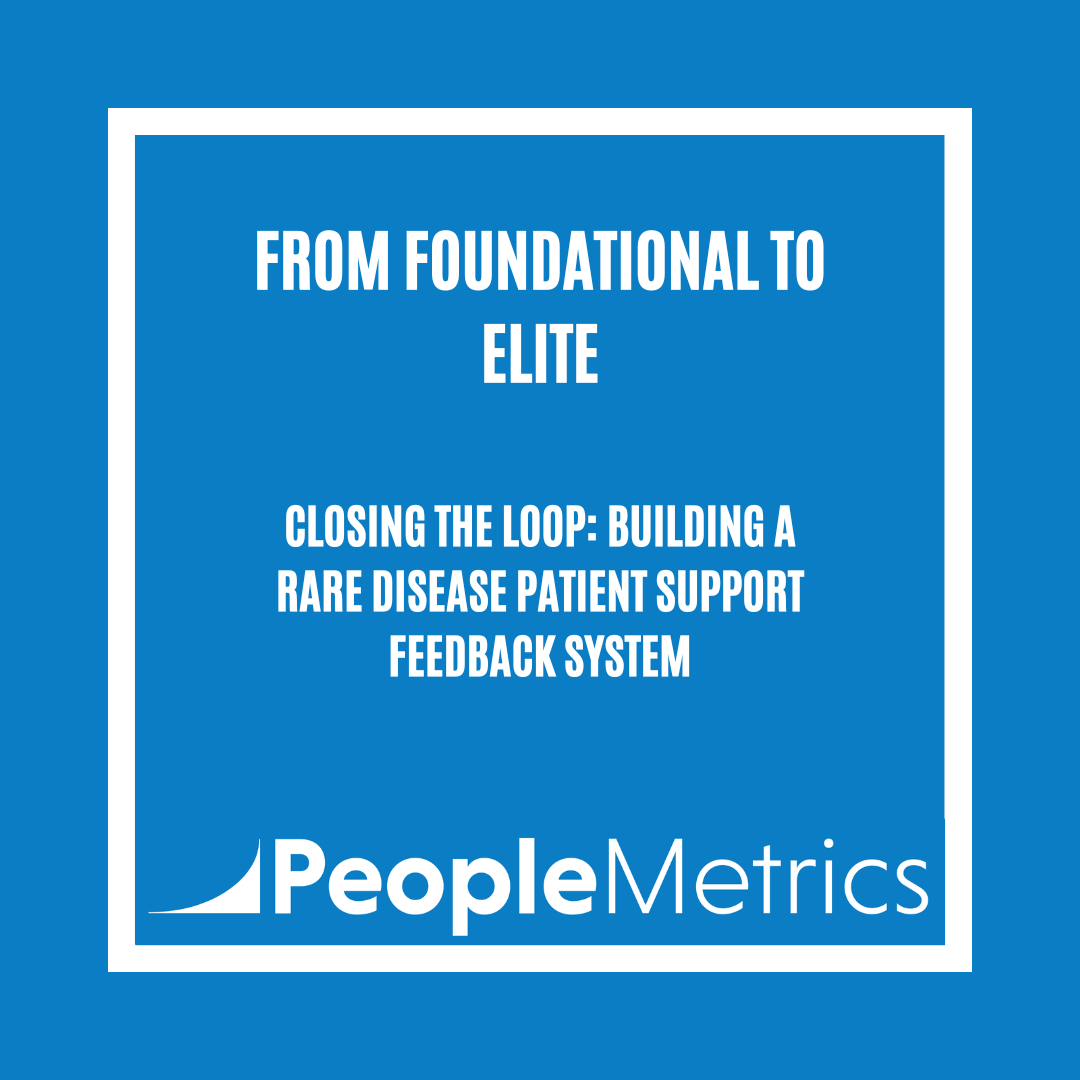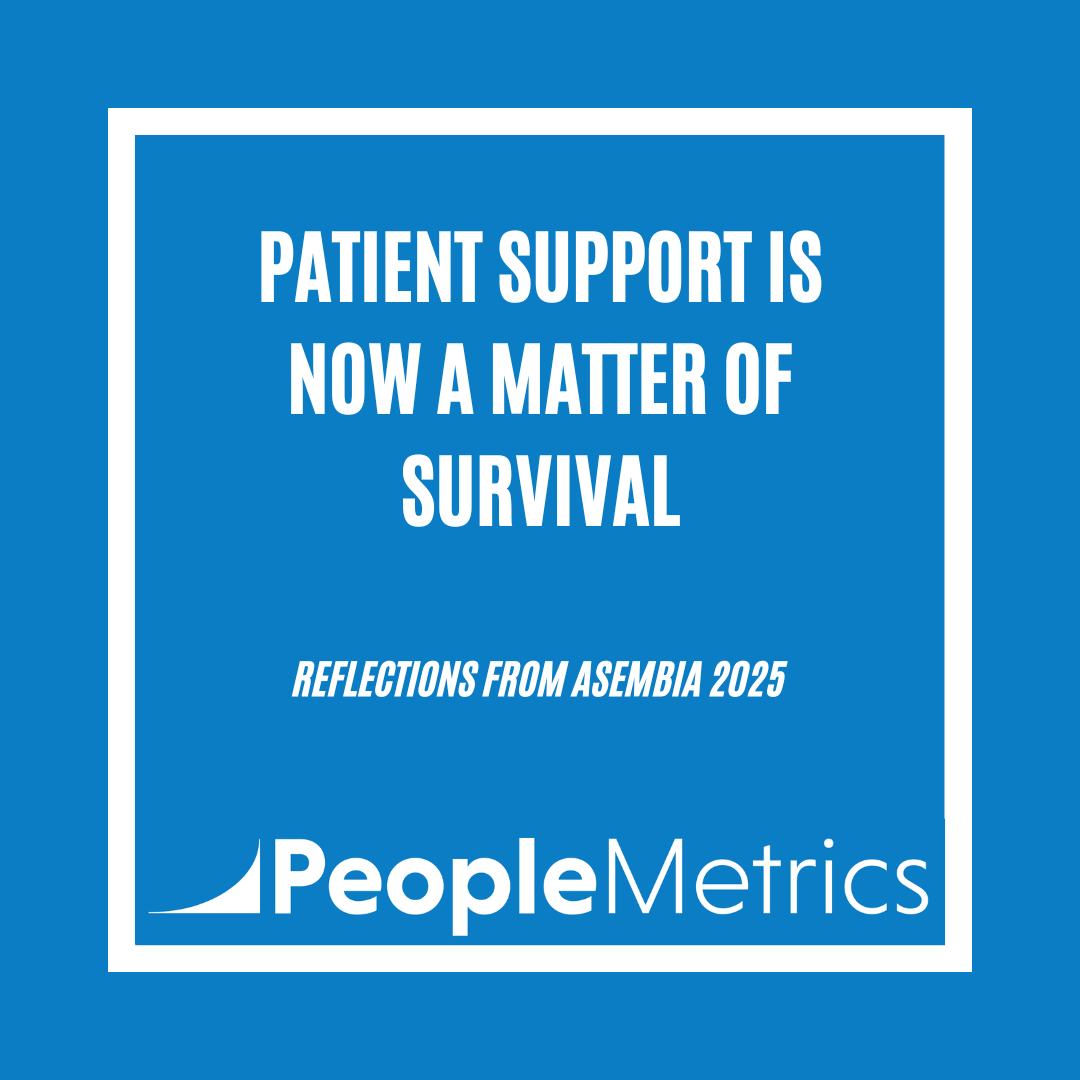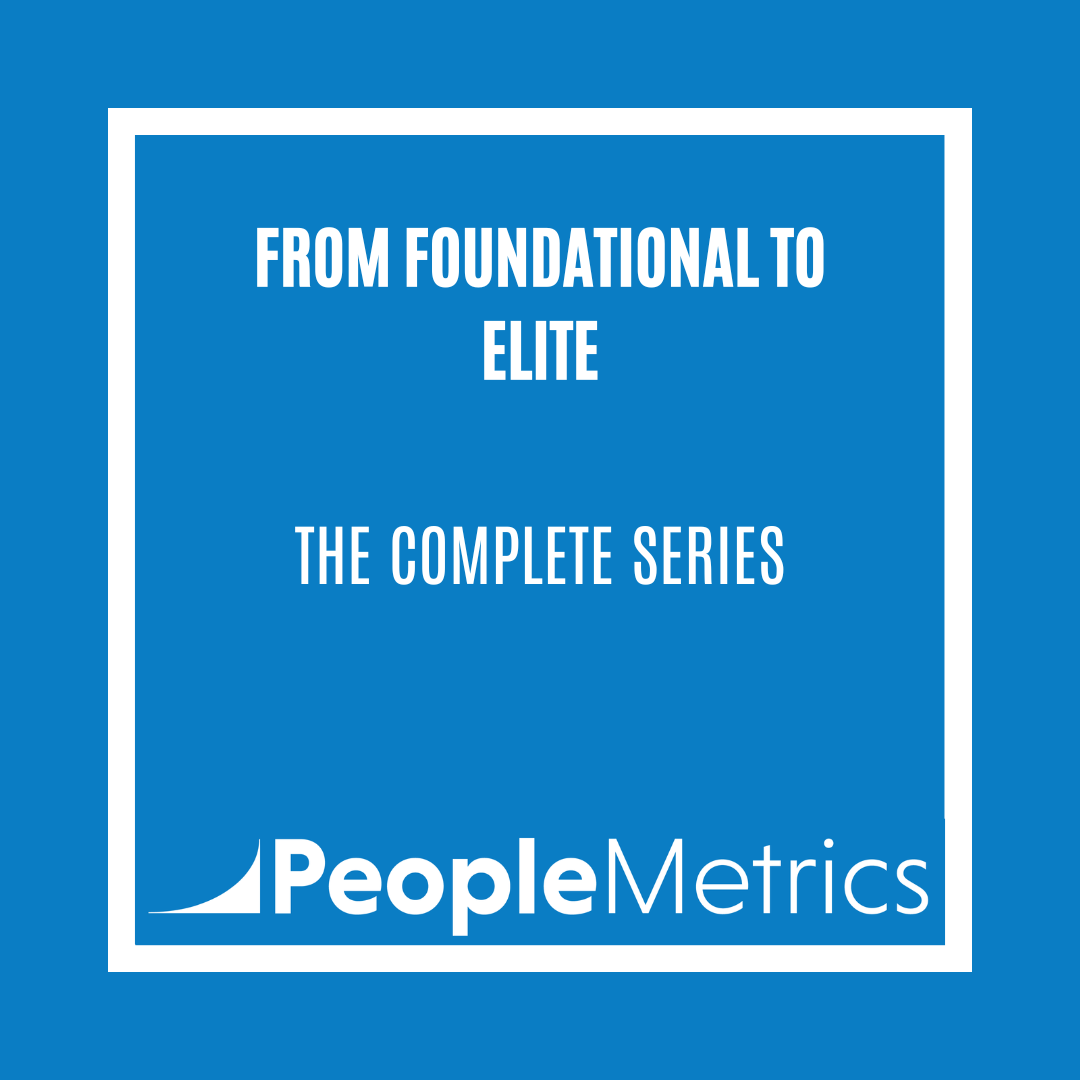Over the last four posts, we’ve walked through a maturity model for patient experience measurement in rare disease patient support programs — from foundational surveys to AI-powered insights.
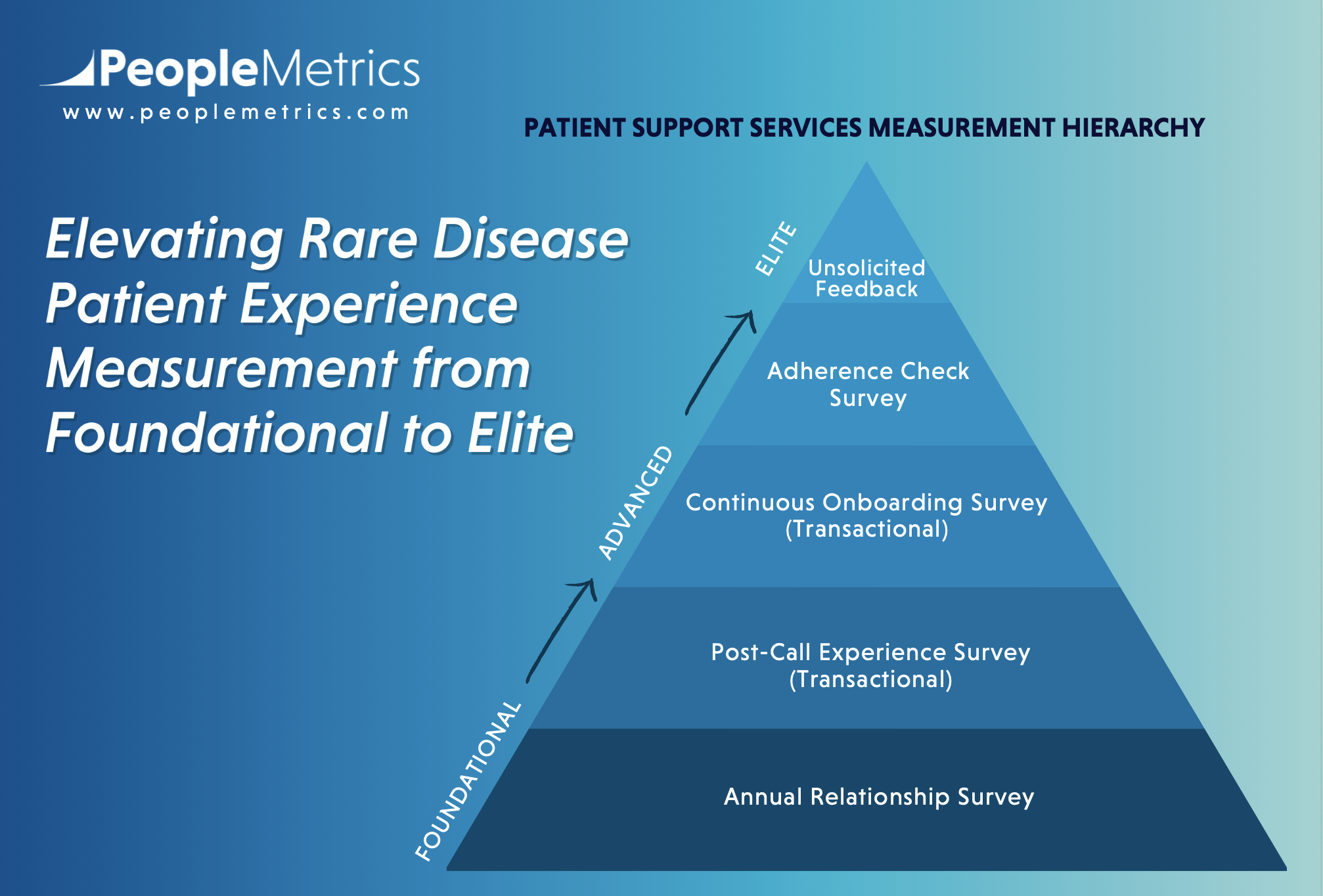
Each level adds value on its own. But the real power lies in connecting them all together.
Because the goal isn’t just more data.
It’s a living, breathing feedback system that improves the experience for every patient, every day.
This table recaps the levels of measurement in patient support programs.
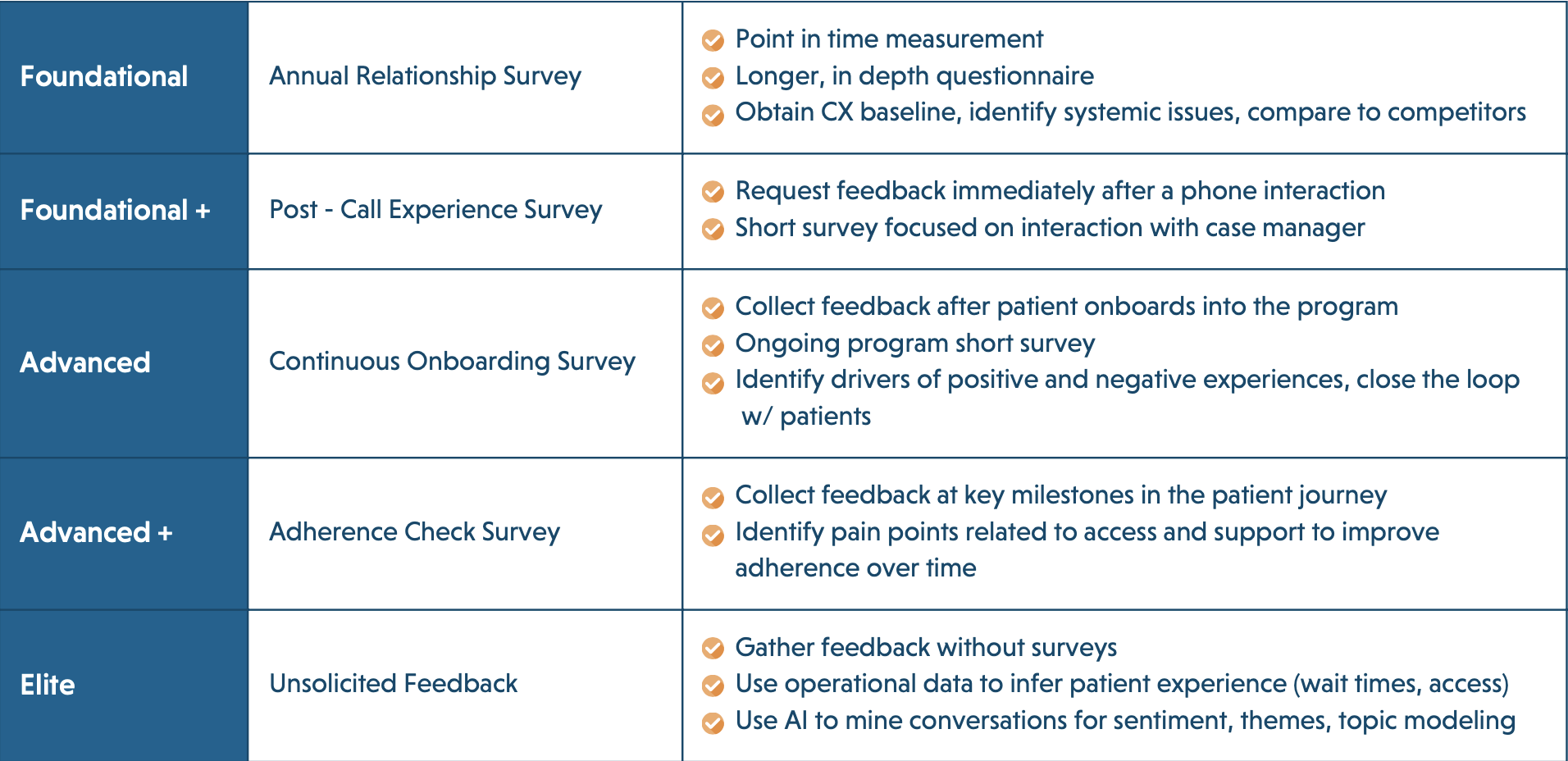
Integrated Feedback Loop
The goal is not to jump to a specific level but to create an integrated feedback loop from patients (and HCPs) that provide the best experience possible for all patients. An integrated feedback loop:
- Combines all data sources into a unified insight stream
- Closes the loop with patients when required
- Drives continuous improvement in the patient support program
This isn’t theory. It’s a model designed specifically for patient support teams serving rare disease populations — where friction must be minimized, trust must be earned, and every touchpoint matters.
What It Looks Like in Practice
Here’s what the integrated feedback loop looks like when it’s fully up and running:
- A patient has a welcome call → onboarding survey sent
- They call with a question → post-call survey triggered
- Their issue is unresolved → flagged in CRM
- AI flags rising frustration in chat transcripts → support team alerted
- Team acts → patient receives resolution and follow-up
- Experience data used to train agents and improve workflow
This kind of system builds momentum. It moves patient support from reactive to proactive. And it ensures that feedback leads to action, not just reports.
How to Start — No Matter Where You Are
The beauty of this model is that you don’t need to be “elite” to begin. Here’s a phased path any team can take:
- If you’re new to PX measurement: Start with an annual relationship survey – it’s quick, you see immediate ROI and is a great way to begin!
- If you’re doing an annual relationship survey and want to do more: Add onboarding and adherence milestone surveys.
- If you’re ready for next-level insight: Mine operational data where patient insight can be garnered without asking them!
- At every stage: Ensure feedback is shared, acted on, and looped back to the patient when appropriate.
Every step up the ladder brings you closer to delivering a truly frictionless experience for your patient population.
Final Thought: Patients Don’t Care Who Runs the Program
They don’t care if it’s an internal or outsourced Hub.
They care about how it feels.
They remember when it was easy — or hard.
They talk about the support that helped — or didn’t.
Your patient experience is your brand. Your reputation.
And in rare disease, it’s part of the therapy itself.
Start listening. Keep listening. And use what you learn to serve patients better, every day!
P.S. If you are attending Asembia in Las Vegas this week, stop by our booth #1923, we would love to say hello!

